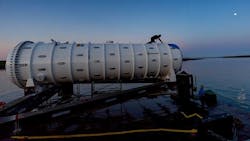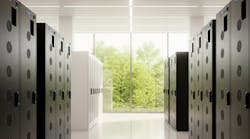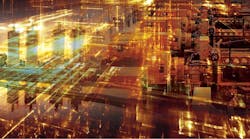Underwater Data Centers: Pushing the Limits of Data Center Innovation
Today we continue our Data Center Executive Roundtable, a quarterly feature showcasing the insights of thought leaders on the state of the data center industry, and where it is headed. In today’s discussion, our panel of experienced data center executives – Jack Pouchet of Vertiv, BASELAYER‘s Samir Shah and Erich Sanchack of Digital Realty – discuss design innovation in the data center sector, especially Microsoft’s deployment of an underwater data center.
The conversation is moderated by Rich Miller, the founder and editor of Data Center Frontier.
Data Center Frontier: Microsoft is deploying underwater data centers. Is this brilliant or crazy? Also, are there other examples of “outside the box” data center innovation that bear watching?
JACK POUCHET, Vertiv
Jack Pouchet: Brilliant for sure, albeit less than practical for most businesses. As a big fan of innovation, this does help push the design envelope for data centers. I do wonder if the next step is to just bury the data center in the ground. In most of the world, once you are 6 to 10 feet below the surface, the ground temperature is a stable 50 to 55°F. At least with an underground facility you can easily provide access shafts and tunnels. I’m not talking a cave here. There are plenty of those. I am suggesting you bury the entire container, leaving just an access shaft for IT / Facilities personnel.
I recently toured a dome-based data center in Portland at the OHSU campus. Now that is not something you see every day. It fully embraces the laws of thermodynamics using them to its advantage for airflow management.
I do believe we will continue to see further innovation around the edge. These applications often require some clever thinking, whether it is for applying IT to a fish farm off of New Zealand, something as mundane as the POS and inventory systems at a gas station, or outfitting 20 to 40 compute nodes in a high-rise building. Perhaps some of the innovations we are seeing in large data centers will lead to new solutions for the edge.
ERICH SANCHACK, Digital Realty
Erich Sanchack: Microsoft is an extremely innovative company moving the data center market’s knowledge forward rapidly with prototypes like this. While we do see that there are risks associated with underwater data centers from a widespread, commercially-scalable perspective, we do believe there will be more shaping of the definition of the operating requirements as new cooling options are presented to the market.
In terms of what they are able to learn, and share, regarding advanced power, cooling, structural considerations and other key data center issues, it’s a very bold and laudable endeavor and something we are eager to learn more about as it progresses.
We do think that it puts a spotlight on one of the most critical issues we face as an industry, with regards to how to cool increasingly dense racks. We anticipate that, over time, air-cooled systems will be phased out and there will be a return to water. We are actively transitioning air cooling to water across our portfolio, at both the storage and chip levels, and using them to cool individual racks of up to 90kWh. From a sustainability standpoint, taking maximum advantage of reclaimed water used in closed systems allows us to advance these initiatives with minimal impact to the environment.
Samir Shah, VP of Product Management, BaseLayer
Samir Shah: By deploying a modular and scalable data center underwater, Microsoft is not only utilizing deep-water cooling, but also solving the problem of finding space close to the end users as nearly half of the population resides within 125 miles of oceans, seas, and lakes. It’s a brilliant idea that solves space, cooling, latency, and sustainability problems of present and future.
Project Natick leverages artificial intelligence and machine learning to monitor and operate, and the same innovation can be applied to land-based data centers and help progress the industry in terms of lights out facilities.
From our view, Microsoft’s project pushes the limits of how we build, deliver, and maintain our critical data center infrastructure. In this regard, Microsoft should be applauded for their willingness to “push the envelope” as it relates to enterprise class data centers. From our perspective as a modular data center provider, we see innovation come through in many different aspects of the data center, none more apparent than in the alternative energy integrated with the power distribution. This includes many use cases which integrate natural gas fuel cells, solar arrays, and direct-to-grid deployments. Liquid cooling, underground data center, and cryptocurrency mining data centers are other out-of-the-box designs that we’ve seen gaining traction in recent years.
RECAP: Check out the full series of Data Center Frontier’s Executive Roundtable.
Keep pace with the fact-moving world of data centers and cloud computing by following us on Twitter and Facebook, connecting with me on LinkedIn, and signing up for our weekly newspaper using the form below:
About the Author



